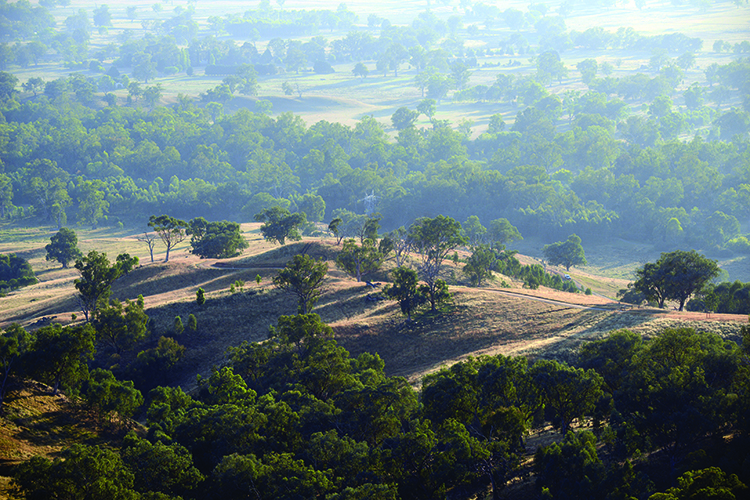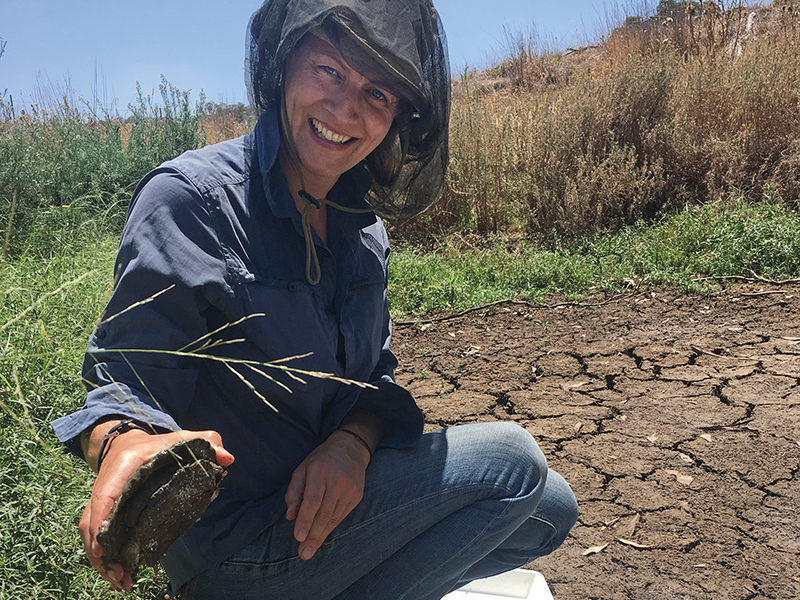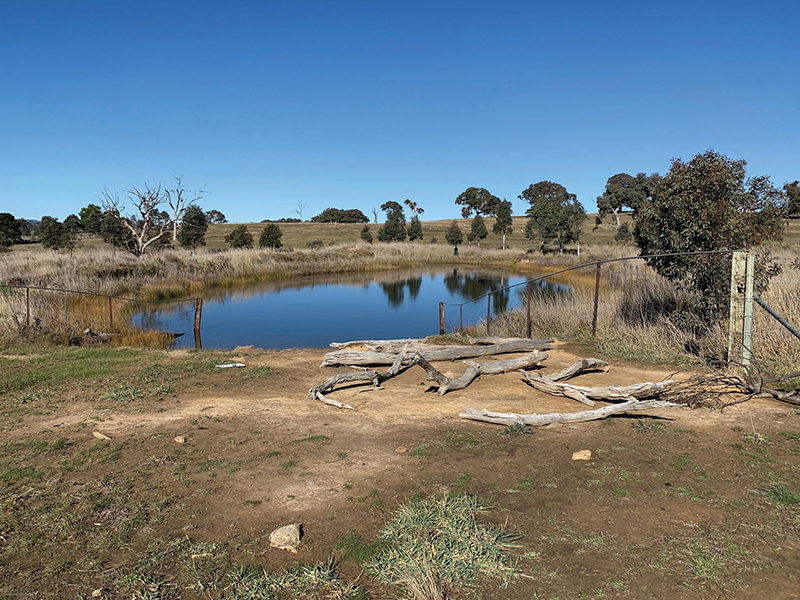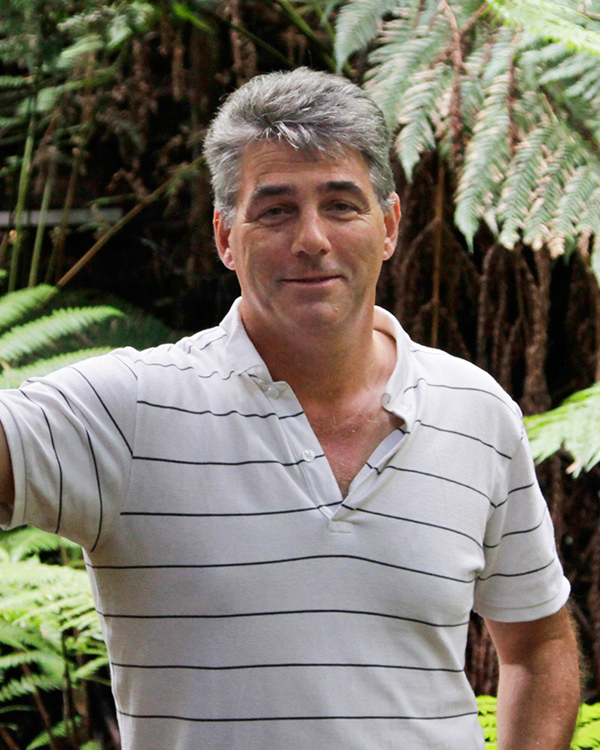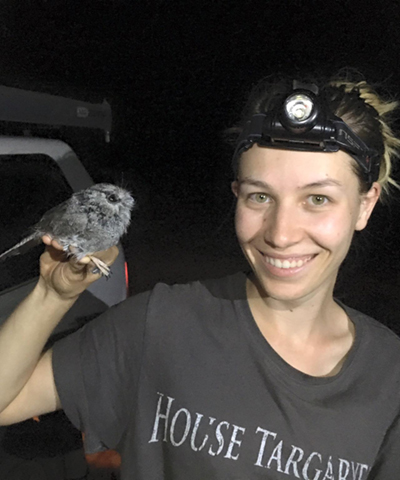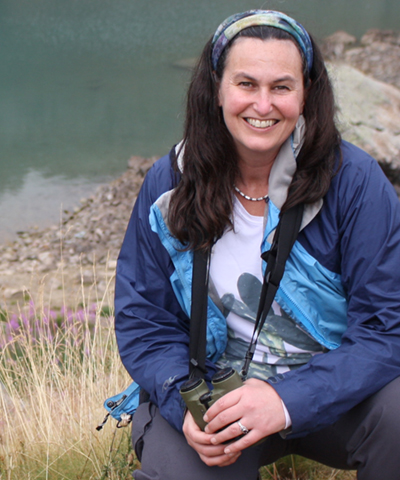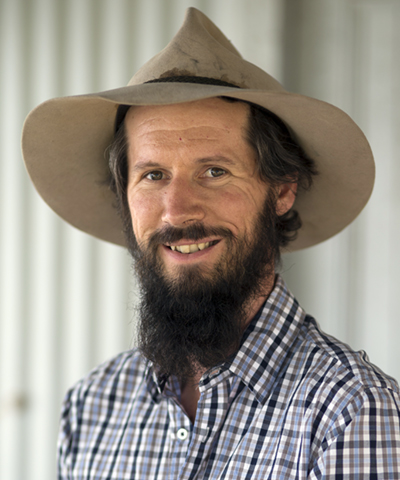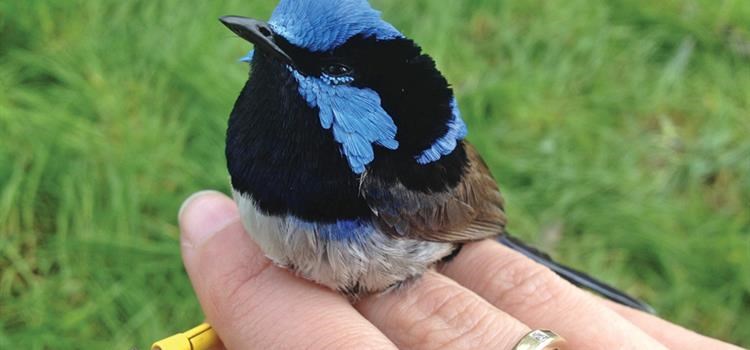
Project: 1.2.1.3
Survival and persistence of woodland birds in restoration plantings
Project Leaders: David Lindenmayer
Research in Brief
Restoration plantings in fragmented agricultural landscapes provide habitat for declining woodland bird communities, but can they support resident, breeding populations of woodland birds?
This research project focuses on the breeding success and site fidelity of woodland birds in restoration plantings in the South West Slopes Bioregion of NSW. It explores the effects of factors such as size and shape of plantings on the ability of woodland birds to successfully breed and persist in plantings. This approach shifts the focus of woodland bird research from the species-level to the population-level, with the aim of improving our ability to assess whether restoration plantings are achieving conservation goals.
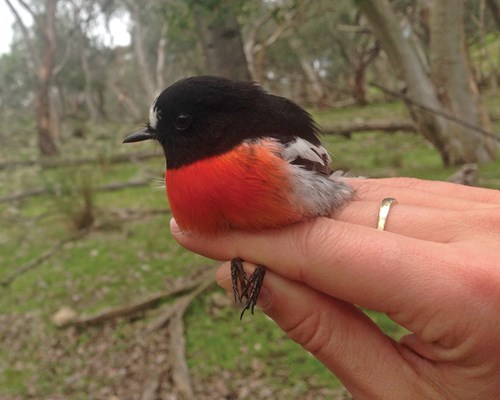
Scarlet Robin. Photo: Donna Belder
Why is the research needed?
Woodland birds are a nationally threatened species assemblage, with ongoing population declines attributed to habitat loss and fragmentation. Over 90% of box-gum grassy woodland has been cleared from agricultural regions in south.eastern Australia since European settlement. Restoration plantings are increasingly implemented to address habitat loss in agricultural landscapes. However, unless plantings support breeding populations of threatened fauna, their effectiveness as a conservation strategy cannot be guaranteed. It is vital to understand the effects of restoration plantings on woodland bird populations, lest they fail to address population declines.
The majority of existing research on woodland bird responses to habitat restoration uses species richness and abundance data to infer habitat quality and the effectiveness of restoration plantings in supporting declining species. However, focusing on species-level responses provides a limited picture of how woodland birds are using a site. The presence of a species in a restoration planting does not necessarily mean that the planting facilitates successful breeding or supports a resident population of that species – crucial indicators of habitat quality.
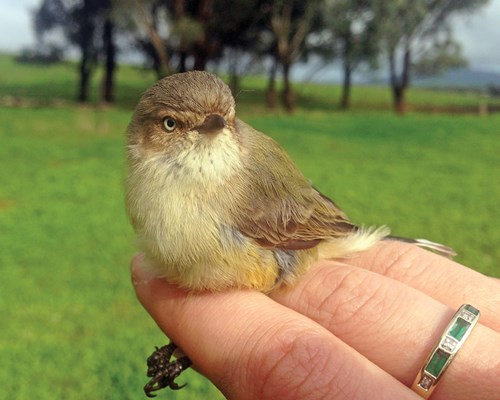
Weebill. Photo: Donna Belder
How will the research help?
The results of this study will address a critical knowledge gap regarding the role of restoration plantings in woodland bird conservation. There is an ongoing drive for restoration projects in box-gum grassy woodland regions, aimed at both improving farm productivity and bringing back biodiversity in these highly modified areas.
Habitat restoration is a key component of many recovery plans for endangered woodland birds, including the NSW Government’s Saving our Species program. It is crucial that restoration programs provide good-quality habitat for these birds in the long-term.
Knowledge gained from this study will directly benefit guidelines for future restoration plantings. For example, data analysis has already revealed that small plantings are particularly valuable for breeding birds. If we can inform restoration efforts by quantifying the value of particular habitat characteristics, we can optimise the quality and long. term effectiveness of the habitat for woodland bird communities.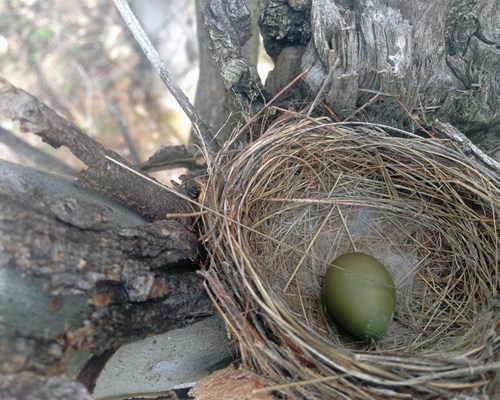
Hooded Robin’s nest. Photo: Donna Belder
What research activities are being undertaken?
The project consists of three major components:
- Surveying breeding activity - In the breeding season (September to November), the team systematically surveyssites for evidence of breeding behaviour and related activities.
- Monitoring nests and young - We monitor the success of individual woodland bird nests using fixed wildlife cameras situated near the nests. Parental behaviour, brood size, nestling development, fledging rates and nest predation are recorded.
- Assessing site fidelity and habitat-use of woodland birds - At each study site, we have trapped woodland birds and fitted them with coloured and/or standard ABBBS leg bands. Individual birds are GPS tracked to determine habitat-use and territory sizes. We will also recapture birds at seasonal intervals over the duration of the project, to assess site fidelity over time.
 - photo Jas Allnutt_w.jpg)
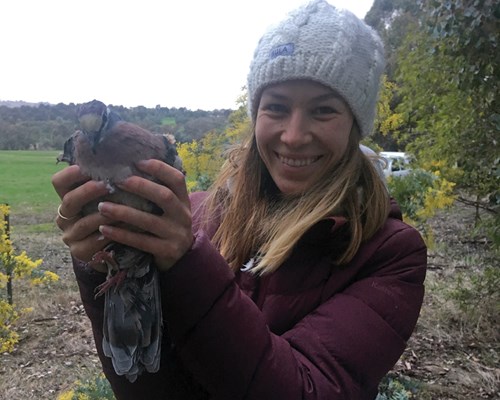
Donna with a Common Bronzewing. Photo: Jas Allnutt
Who is involved?
This project is being undertaken by The Australian National University.
Where is the research happening?
The study sites are located in the South West Slopes Bioregion of NSW. There are 21 sites: 12 plantings and 9 woodland remnants, including two travelling stock reserves. Sites are on farms within a matrix of pasture and cropland.
When is the research happening?
Fieldwork was undertaken from 2015 to 2017. Data analysis and reporting on results will conclude in 2021.
Further information
For more information please contact:
Donna Belder - donna.belder@anu.edu.au
Top image: Superb fairy-wren. Photo: Donna Belder
